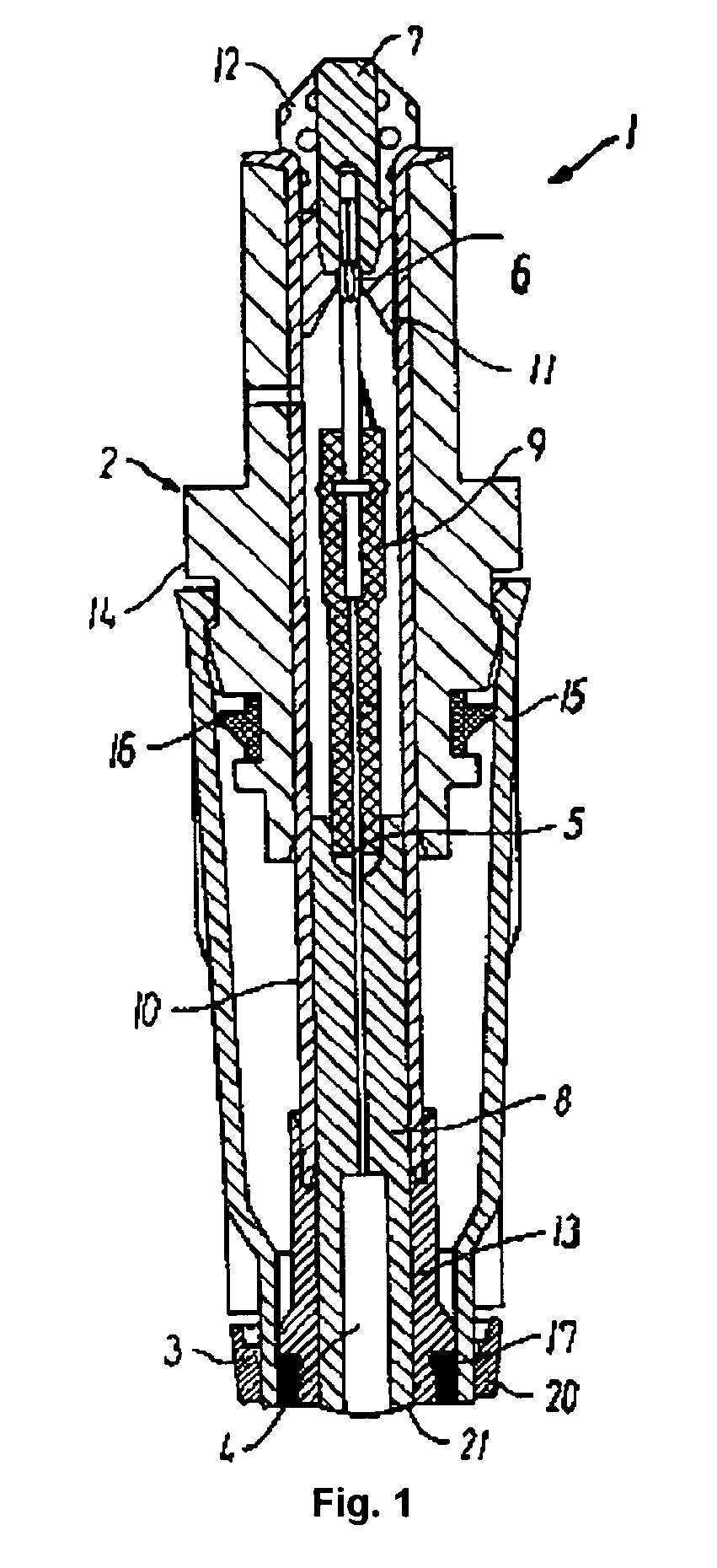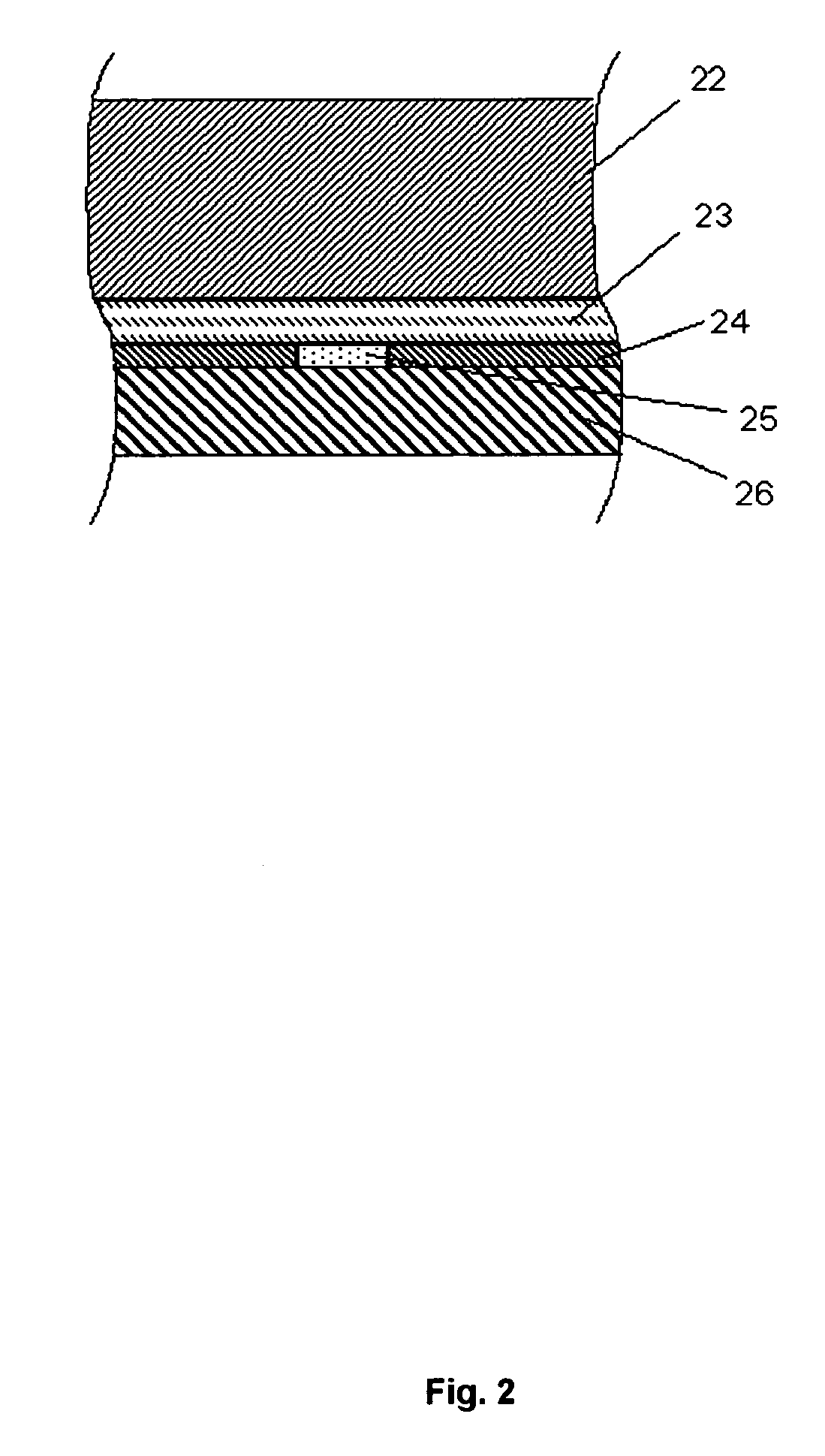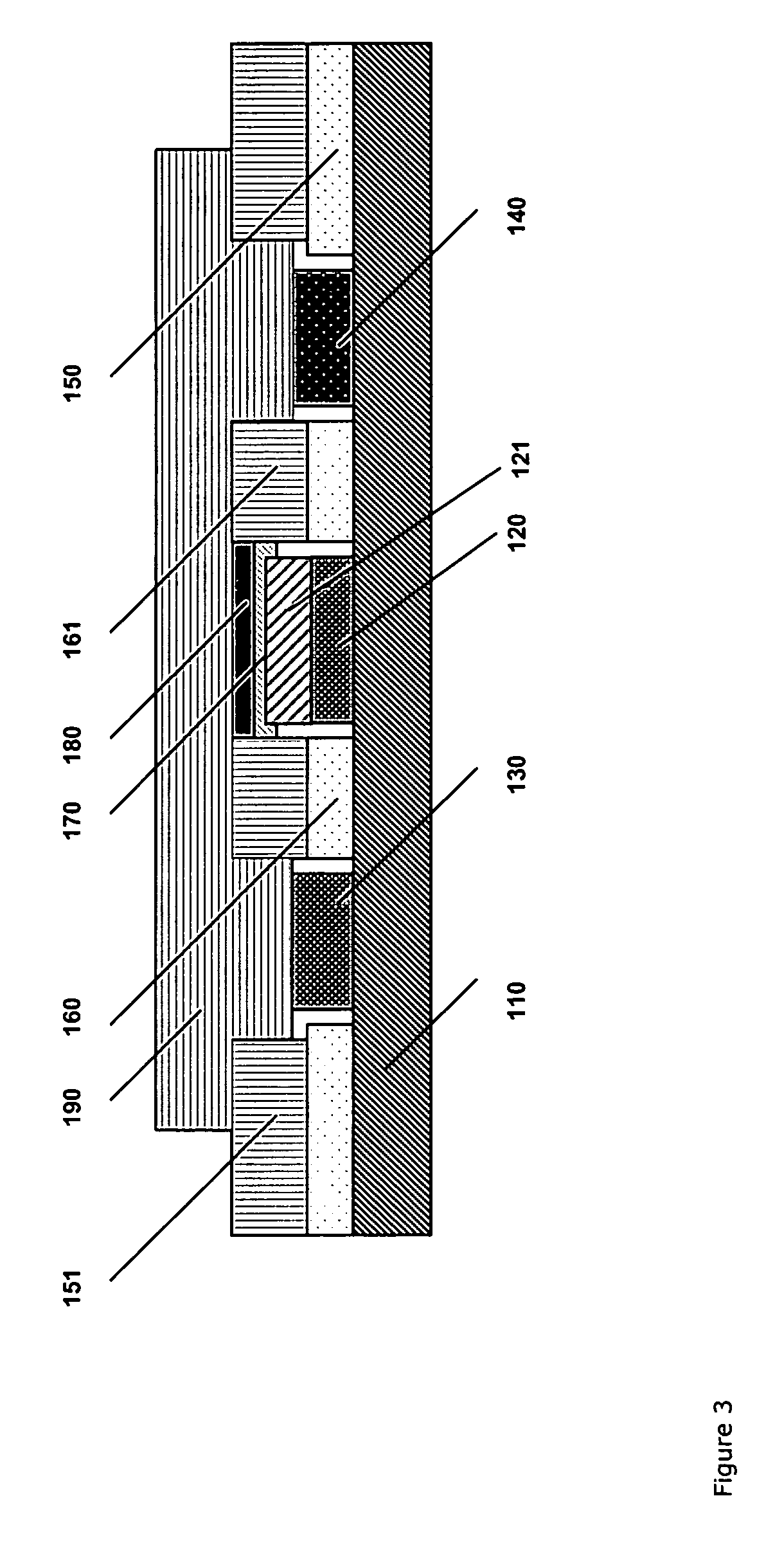Enzyme sensor including a water-containing spacer layer
a technology of enzyme sensor and spacer layer, which is applied in the direction of liquid/fluent solid measurement, biochemistry apparatus, biochemistry apparatus and processes, etc., can solve the problems of ph below the interference limiting layer to drop, non-ionic species diffuse more rapidly, and significant false signal on the electrode, etc., to achieve a higher degree of accuracy and reliability
- Summary
- Abstract
- Description
- Claims
- Application Information
AI Technical Summary
Benefits of technology
Problems solved by technology
Method used
Image
Examples
example 1
Exemplary Creatine and Creatinine Sensor Constructions
[0145] Each of the creatine and the creatinine sensors comprise known amperometric sensors. FIG. 1 shows such a sensor 1 (described above) which is suited for mounting in an apparatus for measuring the concentration of analytes in a biological sample, e.g., an ABL™ 735 Blood Gas Analyzer (Radiometer Medical ApS, Copenhagen, Denmark).
[0146]FIG. 2 shows details of the membrane 21 comprising four layers: a noise reducing water-containing spacer layer 22 facing the platinum anode 4 of the electrode 2, an interference limiting membrane layer 23, a gasket 24 encircling an enzyme layer 25, and a diffusion limiting porous polymeric material 26 which has been impregnated with a hydrophilic polyurethane having a water content of around 80%. The coated membrane layer 26 faces the sample to be analysed.
[0147] The spacer layer 22 may be a 21±2 μm track-edged membrane of polyethylene terephthalate (PETP) (pore diameter approximately 1.3-1.5...
example 2
Relative Diffusion Coefficients of Imidazole / H-Imidazole+ Through a Cellulose Acetate Membrane
[0154] The relative diffusion coefficient of imidazole / H-imidazole+ through the CA-membrane has been measured by analysing the resulting pH in an unbuffered solution in contact with a solution buffered by imidazole through a CA membrane. Both samples were 30 mL and the CA membrane contacting both solutions was 10 mm in diameter (see “Measurement of Apparent Diffusion Coefficient” above). The solution was 140 mM NaCl, 4 mM KCl, 1 mM CaCl2 and 110 mM imidazole, pH was adjusted to 7.40 at 25° C. After 20 hours, the pH of the unbuffered solution had risen to 8.86 at 25° C., while the pH of the other solution was unchanged. Thus, the neutral species of imidazole (the basic moiety of the imidazole couple) is able to diffuse at least 30 times faster than the charged species, mirroring the significant changes in pH which may be observed at the electrode surface during exposure to calibration solut...
example 3
Influence of a Water-Containing Spacer Layer on Creatinine Sensor Measurements
[0155] Two similar blood analysers of the type ABL™ 735 from Radiometer Medical ApS, Denmark, were modified to accommodate the dual sensor system described in Example 1. With one blood analyzer, five creatinine sensors (three-enzyme sensors) and five creatine sensors (two-enzyme sensors) all equipped with a spacer layer according to Example 1 were arranged. Similarly, with a second blood analyzer, five creatinine sensors (three-enzyme sensors) and five creatine sensors (two-enzyme sensors) were arranged according to Example 1, but without the spacer layer.
[0156] The calibration solutions were prepared by dissolving 200 μM creatinine in the Radiometer Calibration Solution 1 S1720 and 200 μM creatine in the Radiometer Calibration Solution 2 S1730. These solutions were repeatedly introduced into the apparatus one after the other and sensor responses were obtained.
[0157] Following such calibration, the sens...
PUM
| Property | Measurement | Unit |
|---|---|---|
| porosity | aaaaa | aaaaa |
| porosity | aaaaa | aaaaa |
| thickness | aaaaa | aaaaa |
Abstract
Description
Claims
Application Information
 Login to View More
Login to View More - R&D
- Intellectual Property
- Life Sciences
- Materials
- Tech Scout
- Unparalleled Data Quality
- Higher Quality Content
- 60% Fewer Hallucinations
Browse by: Latest US Patents, China's latest patents, Technical Efficacy Thesaurus, Application Domain, Technology Topic, Popular Technical Reports.
© 2025 PatSnap. All rights reserved.Legal|Privacy policy|Modern Slavery Act Transparency Statement|Sitemap|About US| Contact US: help@patsnap.com



